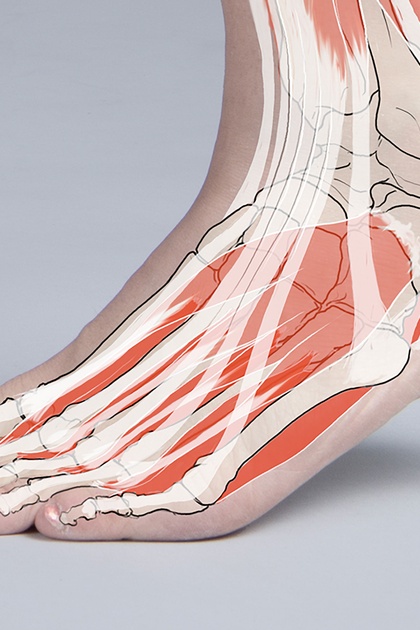
Strength and balance training to combat unstable ankles
Each year there are 15,000 jogging injuries, of which 48% affect the calves and ankles. Medical Running helps you to prevent injuries and overloads.
This article is brought to you by Medical Running
Foot instability problems
Functional instability of the ankle joints automatically has a negative effect on the Achilles tendon, the ankle joint, the knee and the entire statics of the body. A typical scenario: at the start of each loading phase, the ankle rolls inwards (hyperpronation) and then outwards (supination) during the push-off. This puts too much of the wrong kind of tension on the ligaments around the ankle joints, so they therefore become increasingly longer and worn out. When the Achilles tendon is repetitively loaded on one side, this leads to mechanical irritation. If the runner does nothing to change their running technique, this can lead to chronic inflammation of the Achilles tendon or other tendons in the foot. The tendon tissue becomes brittle and in extreme cases, the tendons can then partially or completely tear.
Fig. 1 a) Left foot rolls inwards (hyperpronation); (b) Left foot rolls outwards (supination) [Photo credits: Larsen]
Shoes and insoles can help to reduce pain in the feet and knees, but they are no substitute for loading the feet in an anatomically correct way. As an example: the kneecaps turn inwards during the loading phase, this leads to the «heel buckling due to incorrect loading from above». Insoles can passively support the foot and prevent worse things from happening but do nothing to change the cause of having too-weak deep hip muscles. In the long term, only the correction of the misalignment and the associated repetitive incorrect loading will solve the problem.
Exercise: Mirror, mirror…
Fig. 3 One-leg stand on an unsteady surface in front of the mirror
Benefits: Standing on one leg strengthens the stabilising muscles in the leg, foot and ankle joints in particular.
Action: Shift your entire weight onto one foot and while doing so:
- Foot: the metatarsophalangeal joint has full ground contact
- Knee: the knee faces straight ahead, in the same direction as the foot
- Hips: the thigh has a slight external rotation
- Focus: maintain a stable leg axis, the kneecap faces forwards
Dosage: 30-45 seconds on each leg, 3-5 sets per leg alternately.
Take note: The foot must not roll inwards or outwards. Keep the knees slightly bent.
Variations: Keep your eyes closed while balancing. Practice sometimes in shoes, sometimes barefoot.
This may be of interest for you too


